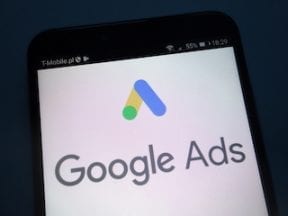In early September, Google Ads announced that the search terms report would disclose fewer user queries. The explanation from Google is to “maintain our standards of privacy and strengthen our protections around user data.” Google posted this announcement (I’ve added the italics):
Changes to the search terms report
We are updating the search terms report to only include terms that were searched by a significant number of users. As a result, you may see fewer terms in your report going forward.
The search terms report allows you to see the actual queries from users. For example, by bidding on the modified broad match keyword of “brown coffee tables,” related user queries are:
- “Coffee tables that are brown,”
- “Inexpensive brown coffee tables,”
- “Brown and white coffee tables.”
By viewing the search terms, advertisers can better optimize their accounts. If it isn’t relevant, a query can be added as a negative keyword.
Say an advertiser sells only high-end coffee tables. The term “inexpensive” doesn’t have the right intent and can be added as a negative. Alternatively, a query that is converting well could be added as a positive keyword and used in the ad copy.
In short, the actual search terms help to show user intent that can’t be gleaned solely from the keywords.
What’s Changing
Search terms reports have always hidden some queries. Searches deemed by Google to be private or to contain sensitive queries won’t show. Historically, such terms have been low. With the change, however, presumably fewer search terms will appear. By late September I had already seen the percentage of hidden queries increase substantially.
Advertisers are concerned about the decrease in visibility since search terms are so crucial to performance. Moreover, what does Google consider as a “significant amount of users”? Many pay-per-click practitioners are worried that search terms with a single ad click won’t be accessible. Losing occasional data for one-click queries isn’t a big deal.
The problem, however, is that one-click queries add up in cost. I’ve seen one-click queries account for 30 percent of an advertiser’s spend. Additionally, the same word may show up in many queries. For example, the word “free” could be in twenty queries. Instead of excluding all of these individual queries, just the word “free” could be negated. Finding these common themes will become more difficult with fewer visible search terms.
Findings
I reviewed before and after click data in five of my accounts since the announcement in early September — reviewing data from Sept. 1 – Sept. 19 and Aug. 13 to Aug. 31 (19 days on each). My review didn’t consider each account’s seasonality, promotions, and bid adjustments. The daily clicks in each account ranged from 100s to 1,000s.
To find this data, I used a script created by Frederick Vallaeys, co-founder of Optmyzr, the ad management platform. The script looks at the number of daily clicks to an account’s hidden search terms compared to total clicks (hidden and visible terms). For example, on Sept. 14 an account may have experienced clicks to 30 hidden search terms and 80 total clicks, which means 37.5 percent of clicks were from hidden terms.
All five accounts experienced at least a triple-digit increase in clicks from hidden search terms beginning on Sept 1. One account experienced a 3,400-percent increase. For the last 19 days in August, all five accounts experienced fewer than 6-percent clicks from hidden terms. Strikingly, starting Sept. 1 three of the five accounts jumped to over 30-percent of traffic coming from hidden search terms.
Some Google updates roll out gradually. But this change appears to be fully implemented. It also follows the Google trend of emphasizing automation without disclosing the data.
For example, Google launched responsive search ads in 2018, wherein advertisers submit multiple headlines and description lines, and Google then rotates combinations to find the best click-through rates. Advertisers can’t see the underlying metrics (such as conversion data) associated with each combination.
Such automated bidding tactics also give control to Google to optimize for a specific goal. Advertisers can view granular performance metrics, but Google does the bidding.
What Can Advertisers Do?
Unfortunately, there is no workaround on Google for the search terms update. Advertisers cannot optimize for search terms that they cannot see. Advertisers bidding on lower intent keywords (such as “coffee tables” instead of “buy coffee tables”) may decide to drop these terms. Lower intent keywords help find positive and negative keywords, but they can also drive up costs. Absent the search terms visibility, it may make sense to bid solely on higher intent keywords.
Advertisers who also run Microsoft Ads accounts should make sure to run those search term reports. They report provide the same information as Google, but Microsoft hasn’t shown any indication that it will be hiding queries. Use the queries found in Microsoft to add negative keywords and new positive keywords to Google.
Finally, having well-structured accounts is more important than ever. Ensure that keywords are themed correctly by campaign and ad group. The targeted keywords should be in the ad copy with a clear call to action. These initiatives should be taken anyway, but they are critical with this update.




